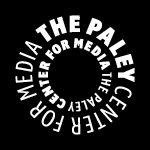
Jennifer Allen
@_JenAllen
Followers
858
Following
692
Media
22
Statuses
135
Assistant Professor, NYU Stern School of Business
Joined September 2019
Great perspective piece covering our new article and the importance of platform-independent experiments: https://t.co/M7LfIDMuxH Thank you, @_JenAllen & @j_a_tucker
science.org
Changing algorithms with artificial intelligence tools can influence partisan animosity
0
6
14
@_JenAllen and @j_a_tucker add a fantastic Perspective piece on the importance of platform-independent experiments on social media's impact on us: https://t.co/6tmcBdTqu8 Strongly agree!
science.org
Changing algorithms with artificial intelligence tools can influence partisan animosity
0
2
6
New paper in Science: In a platform-independent field experiment, we show that reranking content expressing antidemocratic attitudes and partisan animosity in social media feeds alters affective polarization. 🧵
1
7
18
New video! Watch Dr Mohsen Mosleh, @oiioxford sharing his insights on his new co-authored research with Jennifer Allen @NYUStern and @David_Rand_ @Cornell, analysing news-sharing trends across seven major social media platforms. Download the full study:
pnas.org
In recent years, social media has become increasingly fragmented, as platforms evolve and new alternatives emerge. Yet most research studies a sing...
NEW: @oiioxford researchers analysed 10 million posts across 7 social media platforms. They found: 🗳️ Lower-quality news is shared more on right-leaning platforms 📈 Posts aligning with a platform’s politics get more engagement ⚡ Across all platforms, low-quality posts
0
3
6
The media landscape is shifting fast. Sept 25 @ Paley: a don't-miss panel on how digital creators & independent journalists shape coverage & influence legacy media. With @emilyraustin @vitusspehar @_JenAllen @EricDKoch. Mod: @DeanLuk. Join the convo: https://t.co/kIFw0ocSyj
0
3
14
New job ad: Assistant Professor of Quantitative Social Science, Dartmouth College Please share with your networks. I am the search chair and happy to answer questions! (posting again with link below because this horrible site suppresses links)
3
65
161
It’s not that “the misinfo problem” is made up. It is just harder – and messier – than we thought. Rather than throw up our hands, we MUST adapt our paradigms to meet the moment. Read more ->
0
0
3
2 – Study behavior - not just belief Many ppl see falsehoods, but who acts and when? Esp harmful acts like dangerous alt medicine or mob vandalism 3 – Test interventions in fuzzy settings, not just black/white true/false content Field exps, gray area stimuli, etc
1
0
2
This means 3 shifts for misinfo researchers: 1 – Discover misleading content from the bottom up. e.g. sample climate messages test which increase disbelief in climate change
1
0
2
It’s time to reframe “the misinfo problem”: Instead of “Why do people believe fake news?” we need to study - What leads to misperceptions - How do they impact real-world behavior - What interventions actually help reduce misperceptions.
1
0
4
There IS a problem: Misperceptions–eg election denialism, vax and climate skepticism–are common & impactful. But problem is less “Pope Endorses Trump” style fake news, more stories like these 👇 Not false, but misleading – and massively popular (see https://t.co/OZlAEW4zp7)
1
0
5
People are worried re fake news, BUT studies show that outright false news is rare w limited impact. Critics say this means misinfo is a not a problem and we should stop studying it. We disagree!
1
0
3
New in TiCS w @DG_Rand @GordPennycook! It’s been ~10yrs since misinfo research exploded, but our paradigms are stuck in the post-2016 “fake news” model Time for new approaches: o True/False → Content that misleads o Belief → Behavior o Eval interventions in ambiguous settings
1
11
45
🚨 Predoc at Microsoft Research 🚨 Do you have strong front-end programming and statistics skills but need research experience before heading off to graduate school for a computational social science PhD? Apply now for this summer! https://t.co/gj0ZBOFt6i
microsoft.com
Are you a recent college graduate wishing to gain research experience prior to pursuing a Ph.D. in fields related to computational social science (CSS)? Do you have a deep love of “playing with...
2
24
105
Big congrats to the fabulous Anushka Nair for receiving a Rhodes Scholarship!! I've had the pleasure of working with her for the last year and half and can't wait to see her thrive at Oxford next year! @itsmenush
https://t.co/GIPMWahZjL
news.mit.edu
Four from MIT — Yiming Chen ’24, Wilhem Hector, Anushka Nair, and David Oluigbo — have been selected as 2025 Rhodes Scholars and will begin fully funded postgraduate studies at Oxford University in...
0
0
7
So what have I learnt about #misinformation research? I tried to condense it into a list of the 5 biggest challenges the field faces. Second story in my package of stories about misinformation research is up here (and thread to come): https://t.co/08QKJ03Nma
science.org
The burgeoning field is still grappling with fundamental problems, from getting access to data to defining 'misinformation' in the first place
9
73
170
One month left to apply to our new PhD program in statistics and computational social science. Come join me and my terrific colleagues in the heart of New York City! https://t.co/LHfOrbeLru
steinhardt.nyu.edu
Learn statistical, computational, and social science theory and practice to address problems of social importance in public health, education, criminal justice, and other domains.
0
5
14
Great article from @kakape about the five biggest challenges facing misinformation researchers highlighting some of our recent work! Agree with pretty much all these. https://t.co/JOtSi6Fk8a
science.org
The burgeoning field is still grappling with fundamental problems, from getting access to data to defining 'misinformation' in the first place
3
16
52
NEW on our site Are fears about online misinformation in the US election overblown? The evidence suggests they might be, according to this piece by @mleake83 featuring @_JenAllen @Sacha_Altay @BrendanNyhan @YBenkler & research from others Click to read https://t.co/ULBcDtOQs8
reutersinstitute.politics.ox.ac.uk
The period right before and right after the vote could be vulnerable to misinformation. Experts explain what we know about its spread and its true impact.
0
1
1
🚨 New Publication 🚨 with @jonmladd, @KalliGiannelos, @canzengin00 & @MartialFoucault! With the generous support of @pro_jectliberty, we incentivized voters to deactivate their Facebook account during the 2022 French Presidential Election. 🧵👇 https://t.co/Ois0wOswuT
royalsocietypublishing.org
Abstract. Nearly three billion people actively use Facebook, making it the largest social media platform in the world. Previous research shows that the soc
3
38
105

















